12 Most Beautiful Lakes in the United States
With thousands of lakes scattered across the country, chances are good that you're no farther than a tankful of gas away from a great lake. But not all are created equal: some lakes won Mother Nature's lottery when it comes to natural good looks, so we've rounded up some of the best lakes in the U.S.
Take, for example, the impossibly blue, deep water of Oregon's Crater Lake, created by a volcano, or clear, cold Lake Superior, as it laps against dramatic sandstone cliffs.
Related: America's Best Lake Vacations
Man has also played a part in creating some of the most beautiful lakes in the U.S. When Glen Canyon was dammed to provide electricity downstream, the Colorado River rose to form Lake Powell, which snakes its way through red slick rock canyons on the Utah-Arizona border. In California, the striking limestone formations of Mono Lake are visible now because its water sources were diverted, and the lake shrank.
But don't just take our word for it: hit the road to seek out the best lakes in the U.S.
Related: More nature travel ideas
Lake Powell, Utah and Arizona
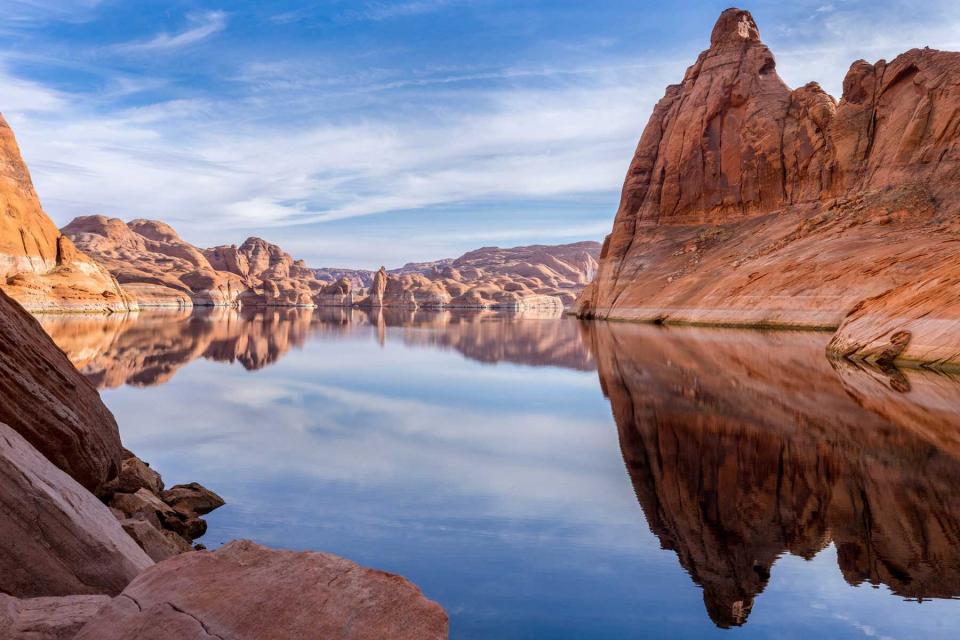
Getty Images/Cavan Images RF
It's not often that humans accidentally create something of such extraordinary natural beauty. Initially, this lake stirred loud outcries when Glen Canyon was dammed and the Colorado River rose to create the second-largest man-made lake in the U.S. But there's no denying the allure of this long lake, as its warm blue waters wind through sheer red sandstone cliffs, filling more than 90 side canyons. However, nature made her mark on the shore of one such canyon with the sandstone Rainbow Bridge, regarded as one of the world's longest natural arches.
Lake George, New York
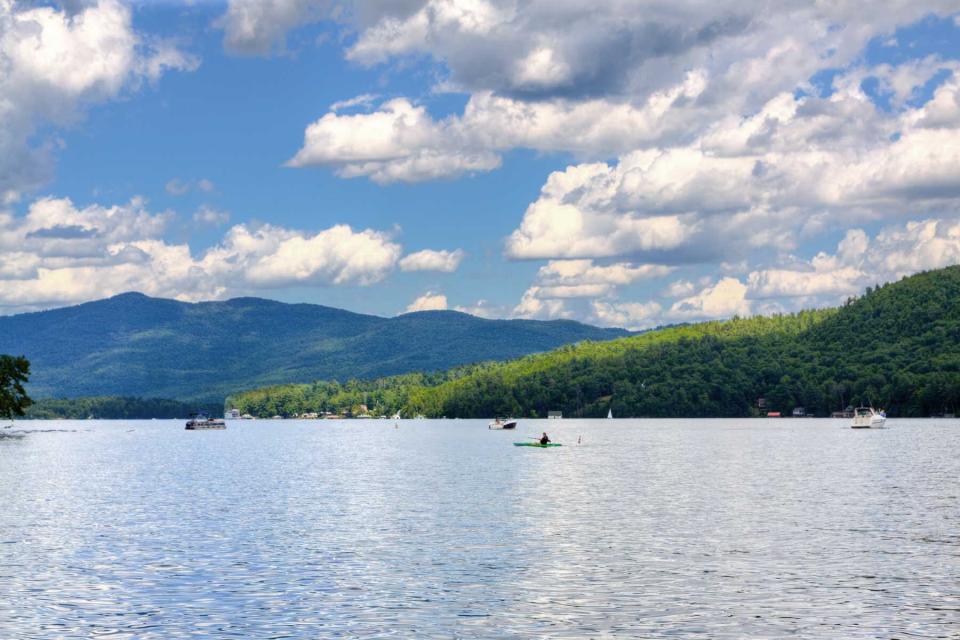
Getty Images/iStockphoto
The so-called "Queen of American Lakes" was a playground for Gilded Age robber barons, many of whose original waterfront stone mansions still line a 10-mile stretch known as Millionaires' Row. The Sagamore Resort, which dates back to the 1880s, still welcomes guests today. At The Narrows, the southern Adirondacks squeeze the spring-fed lake into a five-mile stretch dotted with hundreds of islands of all sizes.
Lake Santeetlah, North Carolina
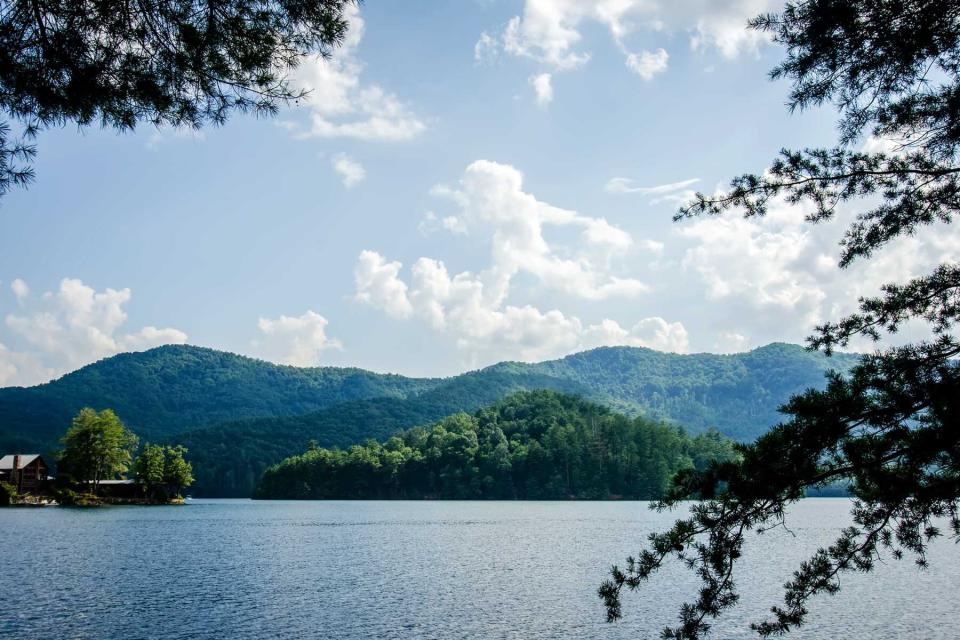
Getty Images
Deep within the Nantahala National Forest and surrounded by the Great Smoky Mountains, Lake Santeetlah's forested 76-mile shoreline is almost completely protected from development. The result is an oasis of quietude for fishing, paddling a canoe or kayak, or just relaxing on the beach at Cheoah Point. This 3,000-acre man-made lake, formed when the Cheoah River was dammed in 1928, remains remarkably pristine. Keep an eye out for otters, beavers, bald eagles, and hawks.
Yellowstone Lake, Wyoming
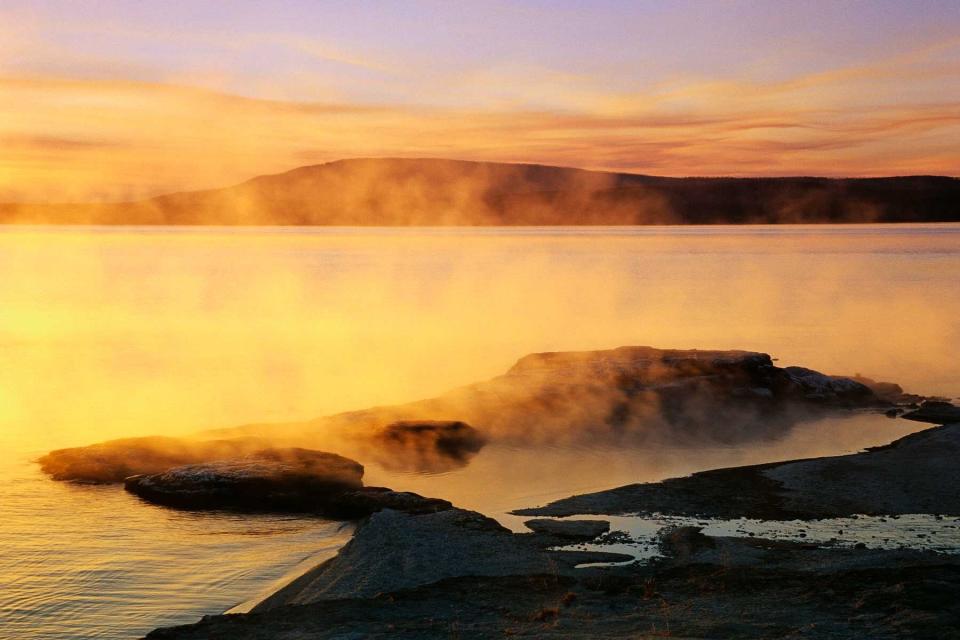
Darrell Gulin/Getty Images
Clear, deep, and cold, Yellowstone Lake is found in one of the world's most geologically active areas, under the watch of the Beartooth and Absaroka mountains. More than 2 million visitors pour into the national park each summer, but winter could very well be the best time to see the lake; the bubbling geysers along the West Thumb shoreline appear as colorful cauldrons in the snow, steam rising eerily from the icy landscape. Indeed, Yellowstone Lake is typically frozen over for half the year.
Lake Superior, Minnesota, Michigan, and Wisconsin
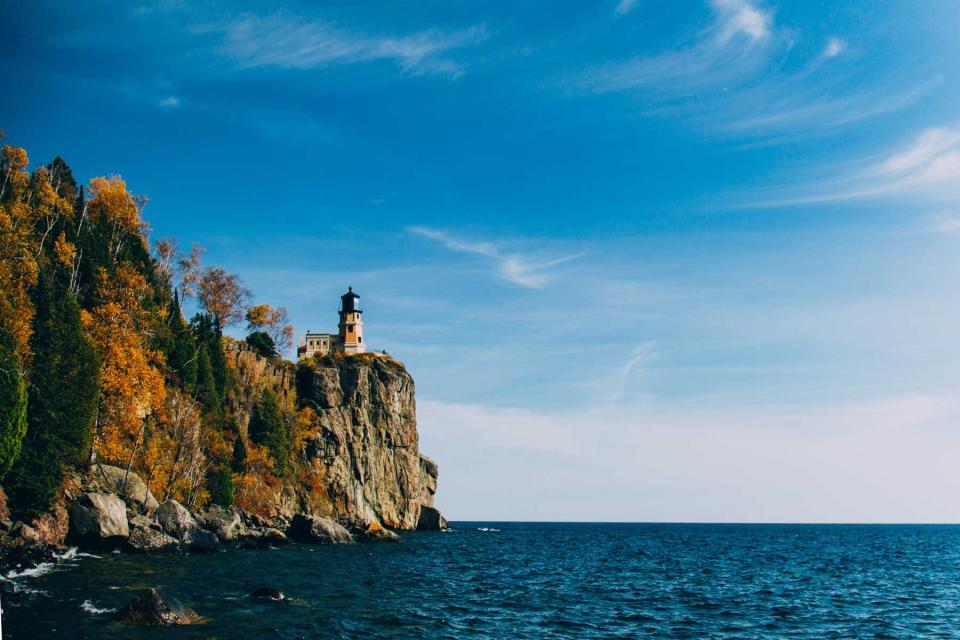
Getty Images
The name speaks for itself: Lake Superior is the world's largest freshwater lake (by surface area). And there's a lifetime's worth of views around every corner of its 2,900-mile majestic shoreline. Natural attractions include the 200-foot sandstone cliffs, beaches, and waterfalls that tumble into the lake at Pictured Rocks National Lakeshore; the sea caves on the Apostle Islands; and the isolated ruggedness of Isle Royale, with its wolves and moose. You can hike, drive, kayak, or take a ferry to your preferred destination. This lake is so vast it can feel more like an ocean — just ask the intrepid surfers of North Shore.
Flathead Lake, Montana
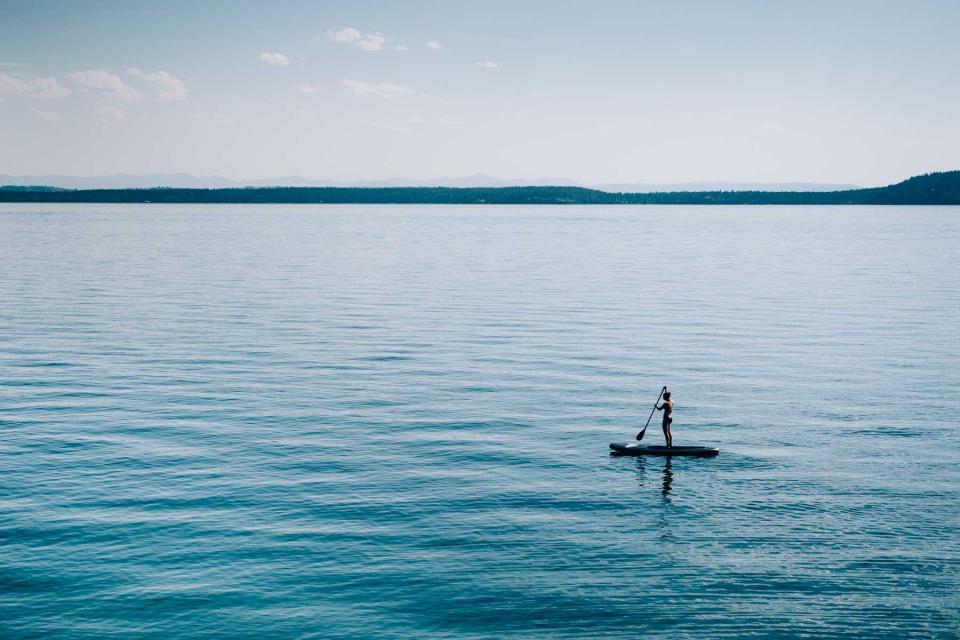
Brent Doscher/Aurora Photos/Getty Images
Flathead is the largest natural freshwater lake west of the Mississippi, with clean, crystalline waters cradled in the Flathead Valley by the Mission Mountains to the east and the Salish Mountains to the west. The lake is blessed with an unusually mild climate for an area so far north and inland, allowing for surrounding fruit orchards and vineyards on its west side. There's even a Flathead Lake Monster, which, judging by some accounts, may have a close cousin living in Loch Ness. It's more likely, however, that you'll spy wild horses roaming the state park.
Hanging Lake, Colorado
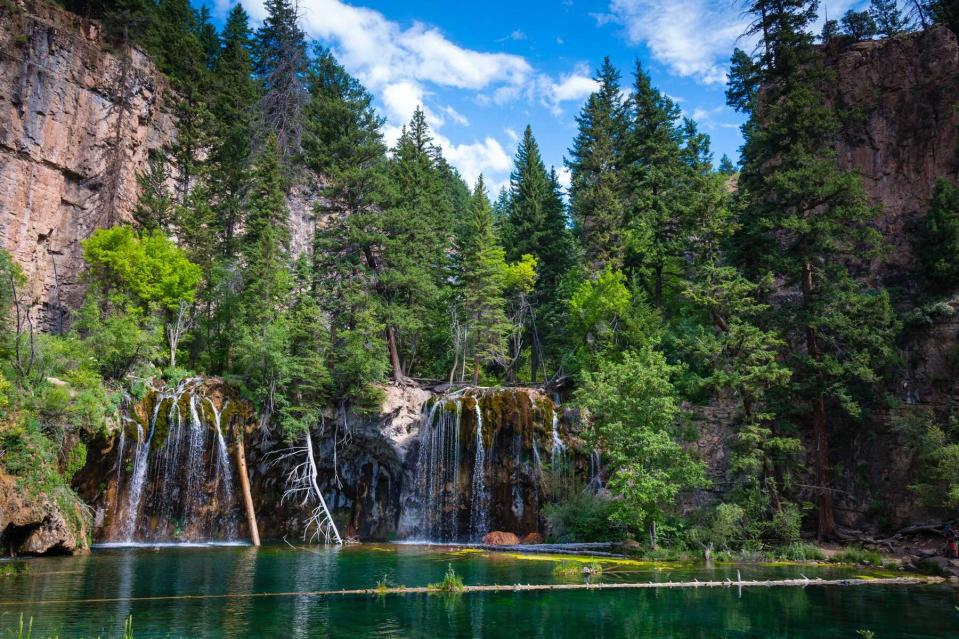
Getty Images
Arriving at this aquamarine gem — on the edge of the Glenwood Canyon Cliffs and fed by waterfalls — is the payoff for completing one of Colorado's most popular hikes (that now requires a permit). The steep, rocky 1.2-mile trail ultimately turns into a boardwalk that protects the lake's fragile ecosystem and its travertine bed, formed over the millennia by mineral deposits. While you can't swim in the waters of Hanging Lake, a short detour on the trail leads to Spouting Rock, where water has sluiced through solid rock to form a waterfall that cools sweaty hikers below.
Crater Lake, Oregon
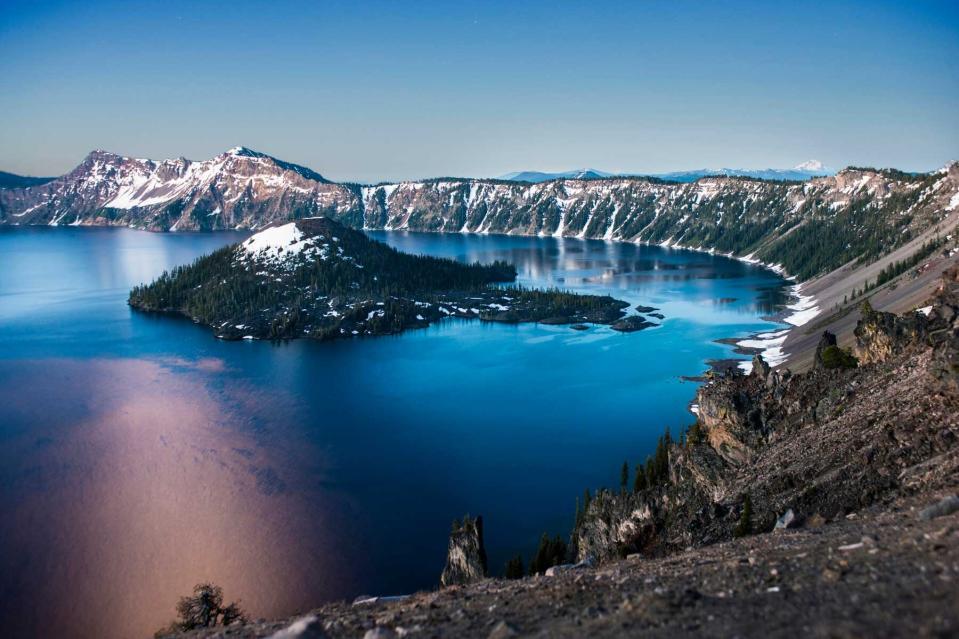
Getty Images/Cavan Images RF
Crater Lake's birth story is inscribed by its nearly circular six-mile diameter. It formed nearly 8,000 years ago when volcanic Mount Mazama blew its top and left a smoldering caldera that would eventually fill with rain and snowmelt. At 1,943 feet, America's deepest lake is cut off from any incoming streams or rivers, so it remains extraordinarily clear. Visibility averages 90 to 100 feet and sunlight penetrates nearly 400 feet down, making it excellent for scuba diving. For an even more dramatic effect, two islands rise from the lake's deep-blue surface: forested Wizard Island and the much smaller, nearly barren Phantom Ship.
Lake Tahoe, California and Nevada
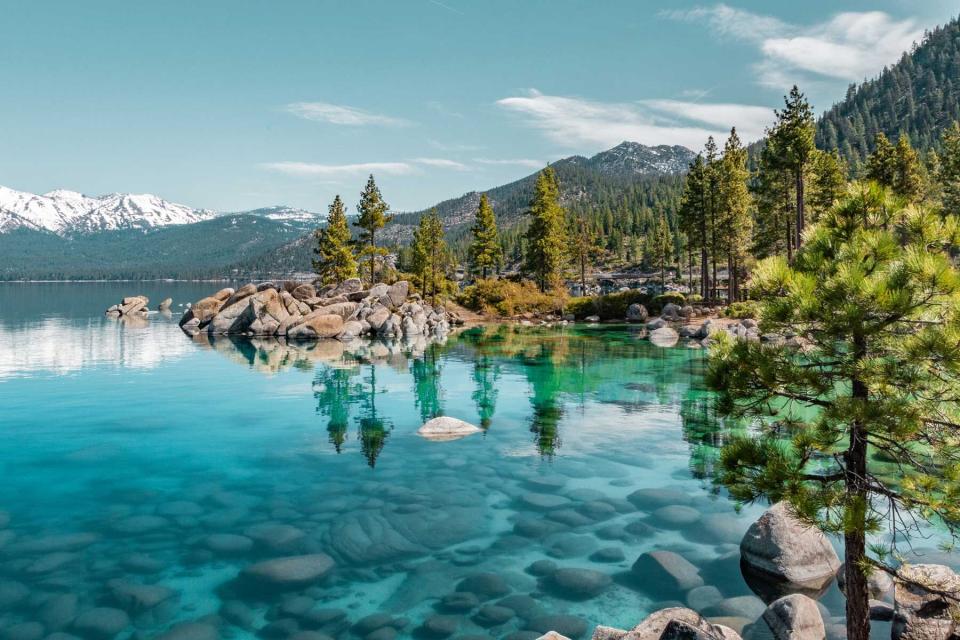
Getty Images/iStockphoto
Ringed by the snowcapped Sierra Nevada mountains and bathed in an Impressionist's palette of blues, Tahoe is the largest alpine lake in North America and the second deepest (1,645 feet) in the U.S. With visibility of more than 70 feet in places, the lake's clarity is so remarkable that — if it weren't for the year-round chilly water — you could swear you were swimming in the Caribbean. During winter, the nearby ski runs offer exhilarating views down to the lake.
Caddo Lake, Texas and Louisiana
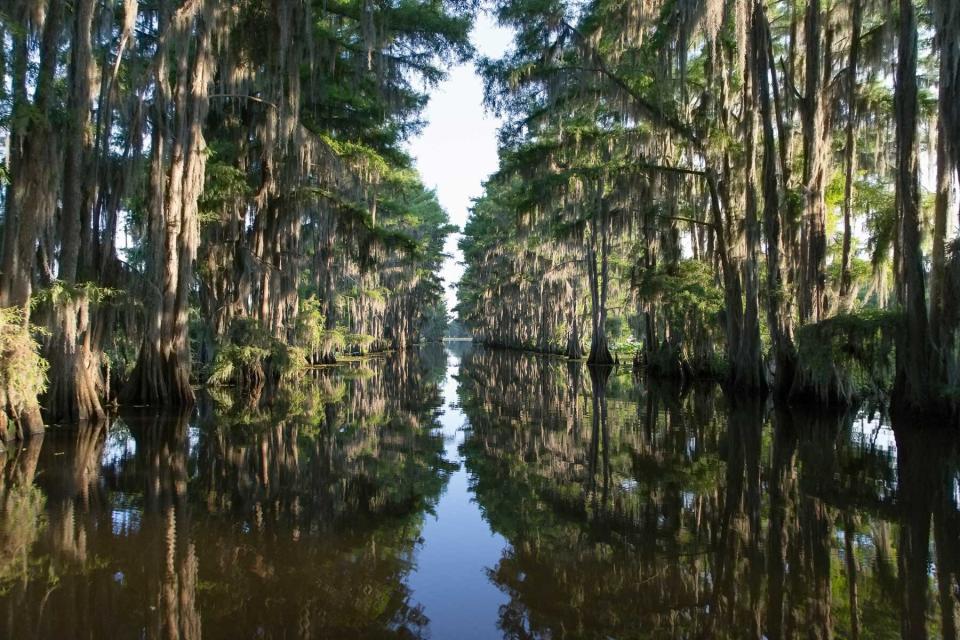
Getty Images/Tetra images RF
Of the handful of towns on Caddo Lake, none sums up the feel of this place better than Uncertain, Texas. Mystery seems to shroud the lake's 27,000 acres, where Spanish moss hangs like drapery from tree limbs in the world's largest cypress forest. In fact, this is not so much a lake as an interconnected maze of bayous, swampy marshes, and backwaters. (Beer boats hid out here during Prohibition.) Alligators lurk under barely-submerged tree roots, frogs pull up on lily pads, and Bigfoot has allegedly been sighted here. About the only way to appreciate Caddo's primordial beauty is by boat or canoe — but by all means, don't forget a map.
Mono Lake, California
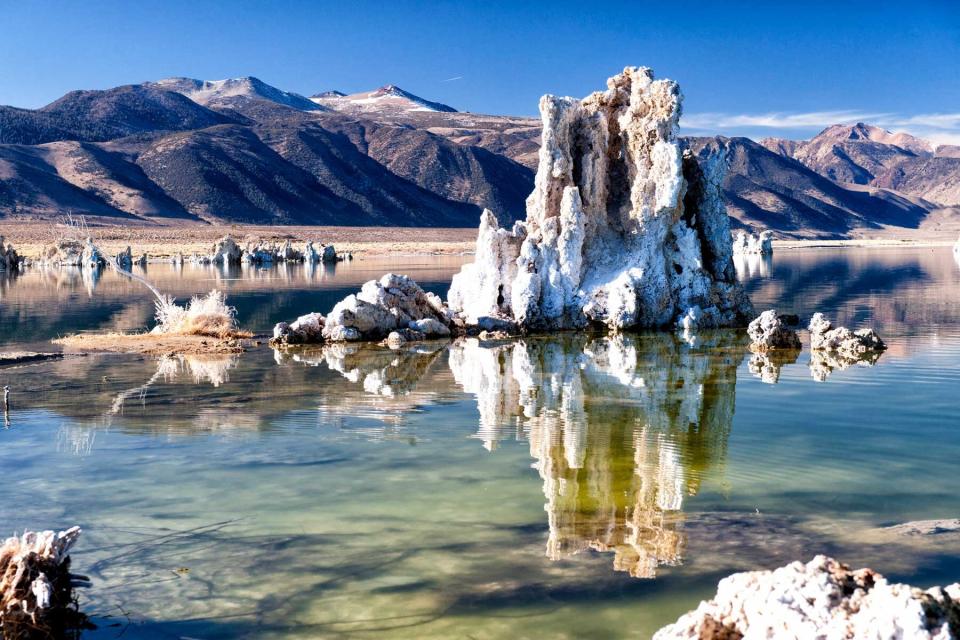
Getty Images
Amid a forbidding landscape of dusty desert, dry hills, and volcanic craters on the eastern flank of the Sierra Nevada, Mono Lake was nearly destroyed by Los Angeles' thirst for the waters that fed it. When the water level plummeted, it exposed eerie-looking tufa towers. These limestone columns form underwater when calcium-rich underground springs react with the carbonate-heavy lake water.
They remain on view today, despite nearly three decades of strict regulation to restore the water level of "California's Dead Sea." Yet dead is a misnomer: each spring, trillions of tiny brine shrimp and alkali flies hatch in Mono's fishless, hypersaline water (three times saltier than the ocean), nourishing millions of birds at one of North America's most important migratory stops.
Echo Lake, New Hampshire
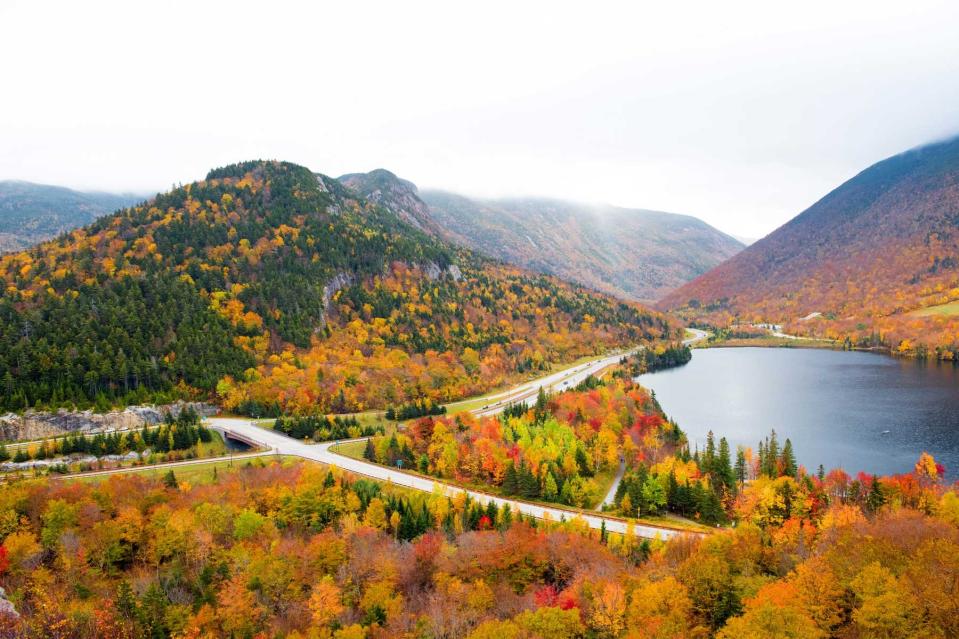
Getty Images
In a southeast corner of the White Mountain National Forest, Echo Lake rests under the shadow of White Horse Ledge, whose reflection nearly covers the 16 acres of water. White Horse and the nearby 700-foot cliffs of Cathedral Ledge are popular rock-climbing destinations; both reward hikers with gorgeous views of Echo Lake below and the distant mountains. Fall is particularly lovely when those slopes erupt in brilliant reds, yellows, and oranges; get an up-close look along one of the numerous hiking trails.

